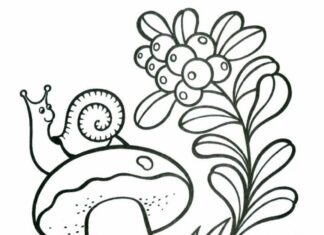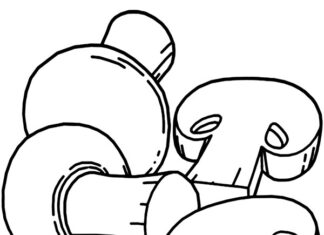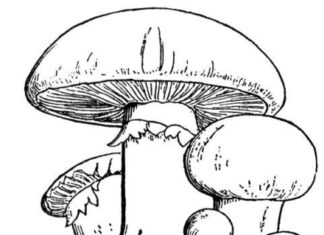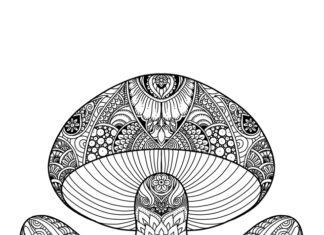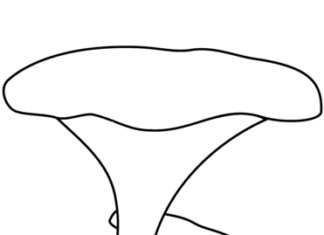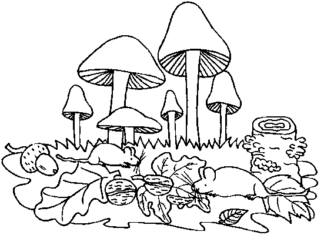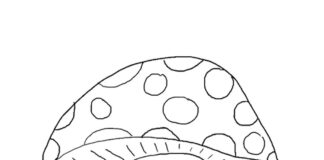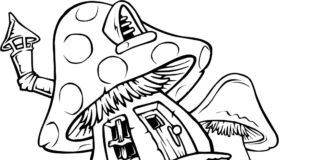Fungi are a broad group of eukaryotic organisms that differ from plants and animals. They form a separate biological kingdom, known as the kingdom Fungi. There are many different species of fungi that vary in appearance, size, mode of life and functions.
Mushroom Coloring Book
information
- Construction: Fungi are made up of microscopic structures called hyphae, which form a network called mycelium. The mycelium can be visible on the surface or grow hidden in organic matter or soil.
- Nutrition methods: Fungi are heterotrophic, meaning that they do not perform photosynthesis and cannot produce their food compound due to the lack of chlorophyll. In most fungi, hyphae penetrate organic matter or other organisms and then absorb nutrients.
- Classification: Fungi are classified based on various characteristics, such as hif structure, spore type and life cycle. There are several major groups of fungi, such as spore-bearing fungi (e.g., molds), bag fungi (e.g., mushrooms) and conjugate fungi (e.g., yeast).
- Reproduction: Fungi reproduce by producing spores, which can be produced in a variety of ways, such as in sacs (bagworms), on special structures (filaments) or by cell division (yeast).
- Environmental impact: Fungi play an important role in ecosystems. They perform the functions of decomposing organic matter and recycling nutrients. Some fungi are also symbionts of plants, helping them absorb nutrients from the soil.
- Human relevance: Fungi have both positive and negative importance for humans. Many fungi have uses in the food industry (e.g., mushrooms, yeast for baking bread) and in the production of medicines (e.g., penicillin). However, some mushrooms are toxic or can cause poisoning.
- Edible and poisonous: Some mushroom species are edible and an important part of cuisine in some cultures, while others are poisonous or even deadly. Distinguishing between edible and poisonous species requires knowledge and caution.
- Medicinal mushrooms: In some traditional cultures, mushrooms are used for medicinal purposes. One example is reishi, which is used in Chinese medicine.
- Research: Fungi are an object of scientific study for many reasons, including their evolution, role in ecosystems, interactions with other organisms, and potential for use in biotechnology and medicine.
- Applications in food production: Mushrooms are widely used in food production, both as a raw material for flavorings (e.g., spices) and aromatics, and as a main ingredient in dishes (e.g., mushrooms in sauces, soups and meat dishes).
trivia
- The largest organism in the world: The fungus Armillaria ostoyae, known as the "Old Man of the Lake," is considered one of the largest organisms in the world. It grows in soil and wood and can occupy areas of hundreds of hectares.
- Fungi and evolution: Fungi are a separate evolutionary branch, separated from plants and animals. They share a common ancestry with unicellular organisms, but evolutionary differences led to the formation of the kingdom Fungi.
- Fungi in cosmology: Fungi can provide a model for studying space processes. Research on how fungi cope with microgravity helps understand the impact of space conditions on living organisms.
- Mushrooms in Art: Mushrooms have been a source of inspiration for artists and creators throughout the ages. Their diverse forms, colors and structures have provided a motif in painting, sculpture and literature.
- Life cycle: The life cycle of fungi can be very complex and vary from species to species. Some fungi go through different stages of development, including the spore, mycelium and filament stage.
- Bioluminescence: Some mushrooms are bioluminescent, meaning that they emit light in the dark. This effect is the result of a chemical reaction that can perform various functions, such as attracting insects.
- Fungi as an environmental marker: Some species of fungi are highly sensitive to environmental changes, including air pollution and forest degradation. Their presence or absence can serve as an indicator of the state of the ecosystem.
- Poisonous mushrooms: The world of mushrooms contains many poisonous species that can be dangerous or even fatal to humans. Distinguishing between edible and poisonous mushrooms requires specialized knowledge.
- Mushroom cultivation: The cultivation of mushrooms for food or research purposes is known as mycology. This includes the cultivation of edible mushrooms, as well as the study of their biological characteristics.
- Mushrooms and medicine: Some fungi are used in traditional medicine, as well as in modern pharmacology. An example is penicillin, originally isolated from the fungus Penicillium.

